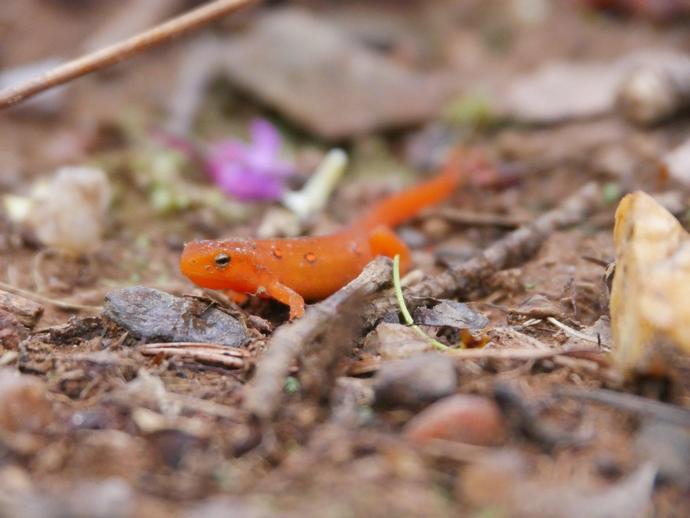April 21, 2020
The eastern newt Notophthalmus viridescens is fairly common, but its life cycle is anything but. These newts start their lives as brownish-green aquatic larvae with gills. After about three months, they turn bright reddish-orange, emerge onto land, and shed their gills. During this terrestrial stage of life, they are known as "red efts" (the two pictured eastern newts are both red efts). During this time, red efts will wander as far as their tiny legs can carry them as they seek out a new pond to call home. After two or three years, when the eft finds a new pond, its bright colors begin to fade back to a dull olive. It grows a wide, paddle-like tail, slips into its new pond, and becomes an aquatic adult.
So why the bright orange coloration during the eft stage? Eastern newts carry a potent sodium channel blocking neurotoxin known as tetrodotoxin. Several other animals carry this same neurotoxin, such as pufferfish and blue-ringed octopi. The bright coloration of the red eft is an example of aposematism (warning colors) that let predators know they would be better off finding lunch somewhere else.
While eastern newts can be spotted pretty frequently, like many amphibians, they are under threat from a variety of dangers, such as climate change, emergent diseases, invasive species and habitat fragmentation, just to name a few. So if you see a red eft strolling through your yard, leave it be to continue its journey. #BenInNature
About this post: Social distancing can be difficult, but the next few weeks present a great opportunity to become reacquainted with nature. While he is working from home, Administrator of Science Ben Williams is venturing outdoors each day to record a snapshot of the unique sights that can be found in the natural world.
This post brought to you by VMNH Corporate Supporter S & K Office Products, Inc.

 Hours & Admissions
Hours & Admissions Directions
Directions

